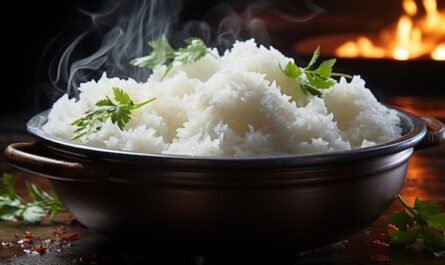For many sushi lovers and culinary enthusiasts, understanding the differences between sweet rice and sushi rice is crucial. These two types of rice are often confused due to their similar appearance and sticky texture. However, they have distinct characteristics and uses that set them apart. In this article, we’ll delve into the unique qualities of each type of rice, their culinary applications, and how to best utilize them in your kitchen.

Understanding Sweet Rice
Sweet rice, also known as glutinous rice or sticky rice, is a type of short-grain rice known for its sticky and chewy texture. Despite its name, sweet rice is not inherently sweet. It is commonly used in Asian cuisines, particularly in desserts and dumplings. The rice becomes very sticky when cooked, making it ideal for recipes that require a cohesive texture.
Culinary Uses of Sweet Rice
Sweet rice is often used in making traditional desserts like mochi, rice cakes, and sticky rice pudding. Its stickiness allows it to be molded into various shapes, making it a versatile ingredient in sweet treats. Additionally, sweet rice is used in savory dishes, such as sticky rice with mango, which is a popular Thai dessert.
Understanding Sushi Rice
Sushi rice, on the other hand, is a type of rice specifically used for making sushi. It is typically a short-grain rice as well, but it is distinctively seasoned with rice vinegar, sugar, and salt to give it a unique flavor profile. The seasoning is what differentiates sushi rice from other types of rice, giving it the perfect balance of sweetness and acidity.
Culinary Uses of Sushi Rice
Sushi rice is primarily used in making various sushi dishes, such as nigiri, maki rolls, and chirashi bowls. The seasoned rice complements the flavors of raw fish and other sushi ingredients, making it an essential component of authentic sushi. For sushi enthusiasts, mastering the preparation of sushi rice is a crucial step in enjoying homemade sushi.
Key Differences Between Sweet Rice and Sushi Rice
While both sweet rice and sushi rice share some similarities, such as their short-grain nature and sticky texture, their differences lie in their preparation and use. Sweet rice is primarily used for its texture in both sweet and savory dishes, whereas sushi rice is specifically seasoned for sushi-making. Understanding these differences is essential for selecting the right type of rice for your culinary creations.
Cooking Techniques
The cooking methods for sweet rice and sushi rice also differ significantly. Sweet rice is typically steamed, which enhances its stickiness and chewy texture. In contrast, sushi rice is cooked using a rice cooker or on the stovetop, followed by meticulous seasoning to achieve the desired flavor profile. For those interested in perfecting their sushi rice, using a Donabe can enhance the cooking process.
Choosing the Right Rice for Your Dish
Selecting the appropriate type of rice is vital for achieving the desired taste and texture in your dishes. For desserts and dishes that require a cohesive, sticky texture, sweet rice is the way to go. On the other hand, if you’re planning to make sushi, investing in high-quality sushi rice and understanding its preparation will make a significant difference in the final result.
Storing and Handling Rice
Proper storage and handling of rice are crucial to maintaining its quality. Both sweet rice and sushi rice should be stored in a cool, dry place. It’s important to understand the different types of rice and their storage requirements to ensure freshness and optimal cooking results.
Conclusion
In conclusion, while sweet rice and sushi rice may seem similar, their differences are significant in terms of preparation, seasoning, and culinary applications. Each type of rice serves a unique purpose, and understanding these nuances will enhance your cooking experience and allow you to create authentic and delicious dishes.

Frequently Asked Questions
What is the main difference between sweet rice and sushi rice?
The primary difference lies in their use: sweet rice is used for its sticky texture in various dishes, while sushi rice is seasoned specifically for sushi-making.
Can sweet rice be used for making sushi?
Sweet rice is not recommended for sushi as it lacks the specific seasoning that gives sushi rice its unique flavor profile.
How should I store sushi rice?
Sushi rice should be stored in a cool, dry place to maintain its quality and freshness. Proper storage ensures the rice remains suitable for making sushi.
This article contains affiliate links. We may earn a commission at no extra cost to you.




